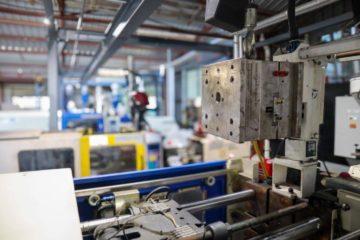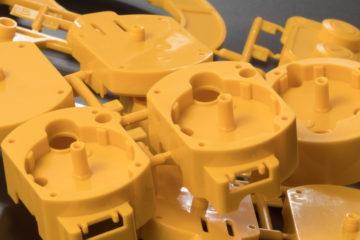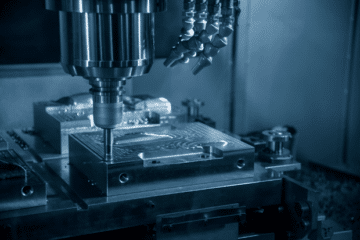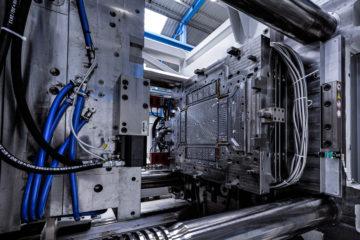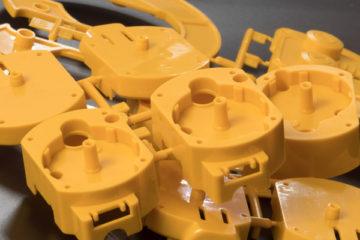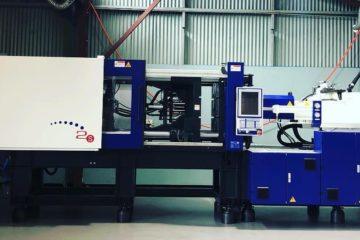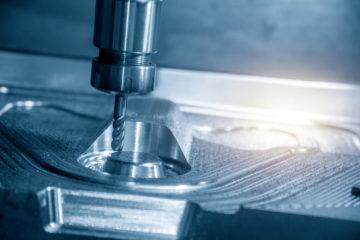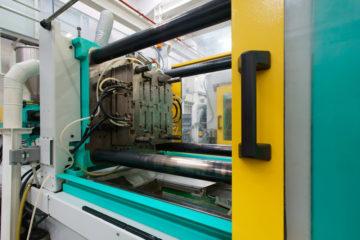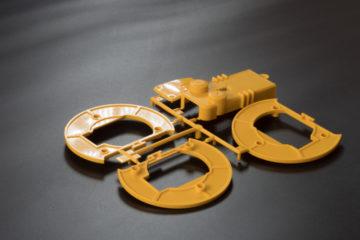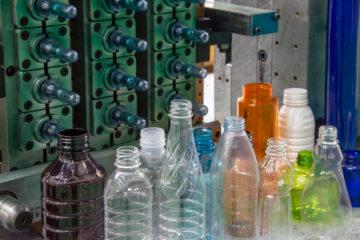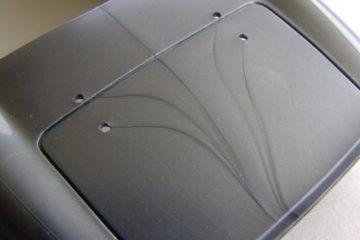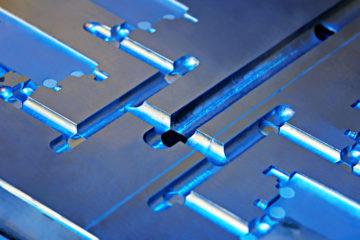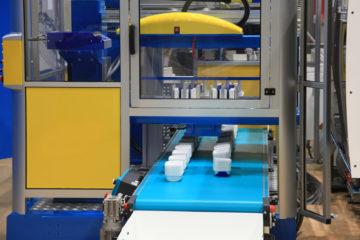How does an Injection Moulding Press work? An Injection Moulding Press or Injection Moulding machine is a rather complicated, fully automated piece of machinery.
An injection moulding machine makes moulded plastic parts quickly and with a high degree of repeatability. The plastic parts can be made from a range of different plastics for different purposes. As such, injection moulding is seen as a critical mass manufacturing technique.
Every injection Moulding machine has a few common elements. Firstly, there is a material hopper or loader. Raw plastic pellets or granules are fed into this hopper. Hoppers come in a variety of sizes and can also be fed (via vacuums) for longer moulding runs from larger bags of material. Hoppers can also incorporate features such as material drying.
Next is the screw and barrel. This barrel is heated to the melting point of whatever plastic is being used. The barrel has several heated zones, each controlled by an electric heater band. These temperature control zones affect how the material is shot into the mould and how quickly this occurs. The screw within the heated barrel, assists in melting the material and creates the pressure under which the injection shot is forced into the mould. Once the shot has been shot into the mould the screw winds back as more material is fed in through the hopper into the barrel and the process repeats.
Now the shot is fed into the mould, (usually a 2-part mould) down a passage called the sprue. The sprue stops into the middle of the mould and then the liquid plastic runs outwards to the mould cavities. The mould cavities are hollow voids of space, which when filled with plastic, form your products. The cavities are connected to the sprue by passages called runners. The runners end just before the cavity and terminate in what’s called a gate. Gates dramatically affect the way the part fills with plastic as they are usually the thinnest point in the mould. There are several types of gates which have pros and cons, depending on the result you want.
The cavities filled with plastic, including the runners and sprue with then cool and solidify in the mould. Once they are solid enough, the moving half of the mould, is retracted on a hydraulic ram.
As it nears the end of the pull back stroke, a plate that holds a series of ejector pins, is pushed forward towards the products. These pins form some of the cavity in the moving half, and as they push forward, it pushes the products off the mould and into a chute. The chute empties either next to the machine, so often moulders will line up tubs to catch the product or have a conveyor belt to move them to a place, where they can undergo any quality control test and then be packed into boxes to be shipped out to assembly, distribution stores or to customers.
I’ve glossed over a lot of detail when describing a typical injection moulding machine, but the key takeaway point is that these complex machines, that have heating and cooling systems, injection and ejection systems, automated material feeds and automated running are incredible machines that produce thousands of plastic pieces every day.
If you’d like to learn more about injection moulding machines or if you have an idea for an injection moulded product, please don’t hesitate to contact us about a free 1-hour meeting.
Subscribe to Our Newsletter
Get the latest news from Dienamics into your inbox





